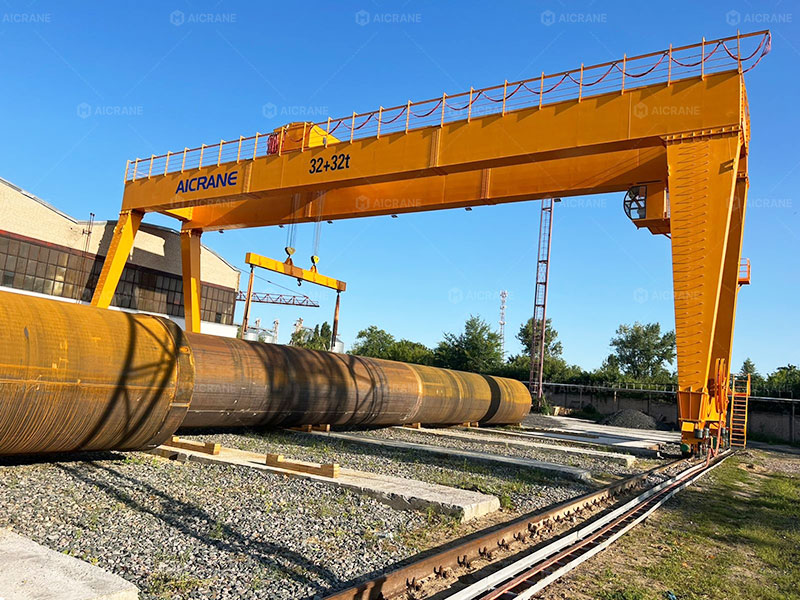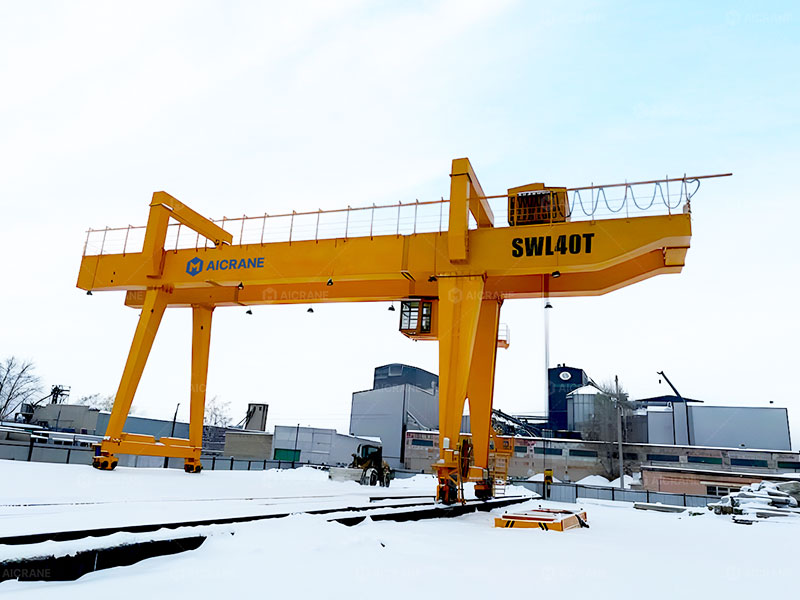When it comes to heavy lifting and material handling in industries such as construction, manufacturing, shipbuilding, and logistics, gantry cranes stand as some of the most essential equipment. At the core of these cranes is the portal frame design, a structural configuration that ensures stability, strength, and efficiency. To truly appreciate the engineering behind gantry cranes, one must understand the principles, functions, and advantages of portal frame design. This article explores what a portal frame is, how it is applied in gantry cranes, and why it plays a crucial role in safe and effective crane operations.

What Is a Portal Frame?
A portal frame is a structural framework composed of vertical columns and horizontal or slightly pitched beams, joined to create a rigid framework. This design resembles a large doorway or “portal,” hence the name. Portal frames are widely used in industrial buildings, warehouses, and portal gantry crane structures due to their ability to cover wide spans with minimal internal supports while maintaining excellent load-bearing capacity.
In gantry cranes, the portal frame forms the main load-bearing structure. The legs (columns) support the crane bridge or girder, which carries the trolley and hoist system. Depending on the design, the frame may be supported on wheels for mobility or fixed rails for stability.
Key Components of a Portal Frame in Gantry Cranes
-
Vertical Columns (Legs)
These form the vertical supports of the crane. They transfer the weight of the load, trolley, and bridge directly to the ground or rails. -
Main Beam (Girder or Bridge)
The horizontal beam connects the columns and provides the track for the trolley and hoist. It is often reinforced to handle bending stresses and dynamic loads. -
End Carriages
These connect the legs to wheels or bogies, allowing the gantry crane to move along rails or across floors in the case of rubber tyred gantry cranes. -
Bracing Systems
Diagonal or horizontal braces are often included to resist lateral forces, wind loads, and dynamic movement, enhancing overall stability. -
Connections and Joints
Rigid joints between beams and columns are essential in a portal frame design. Unlike simple pinned joints, rigid joints prevent rotation and distribute forces more effectively.
Why Portal Frame Design Matters in Gantry Cranes
The portal frame is not just a structural choice; it is the very foundation of how gantry cranes operate. Its design influences every critical factor:
-
Load Distribution: A well-designed portal frame ensures that loads are evenly distributed, reducing stress concentrations and prolonging the crane’s service life.
-
Stability: Rigid connections and bracing systems prevent sway, vibration, or tipping under heavy loads.
-
Span Capacity: Portal frames can cover large spans without intermediate supports, which is crucial in applications such as shipyards and warehouses.
-
Versatility: The design accommodates both full gantry cranes and semi gantry cranes, adapting to different operational environments.

Types of Portal Frame Designs in Gantry Cranes
-
Single Girder Portal Frame
-
Consists of one horizontal beam connecting the two legs.
-
Best suited for medium to light-duty lifting tasks.
-
Advantages: lower cost, lighter weight, simpler installation.
-
-
Double Girder Portal Frame
-
Includes two parallel beams supported by legs.
-
Provides higher lifting capacity, greater stability, and allows for higher lifting heights.
-
Commonly used in heavy-duty applications such as steel mills, shipyards, and container handling.
-
-
Semi-Portal (Semi-Gantry) Frame
-
One leg runs on rails on the ground, while the other is supported by a wall or building column.
-
Ideal for workshops where one side of the crane can integrate with existing structures.
-
-
Box Girder Portal Frame
-
Uses enclosed box-section girders instead of standard I-beams.
-
Provides high torsional strength and stiffness, making it suitable for extremely heavy-duty operations.
-
Structural Considerations in Portal Frame Design
Designing a portal frame for a gantry crane requires careful attention to engineering principles and site conditions. Some critical considerations include:
-
Load Factors
-
Dead Loads: Weight of the crane structure itself.
-
Live Loads: Weight of lifted materials.
-
Dynamic Loads: Forces generated by moving trolleys, hoists, and sudden braking.
-
Environmental Loads: Wind, seismic activity, and snow loads (if used outdoors).
-
-
Material Selection
Steel is the most common material due to its high strength-to-weight ratio. High-quality welds and corrosion protection coatings are essential for outdoor gantry cranes. -
Deflection Control
Excessive deflection can reduce precision and safety. Codes and standards often specify maximum allowable deflection (e.g., span/1000 or span/800). -
Foundation Requirements
The legs of a portal frame transmit large loads to the ground. Proper foundation design – whether concrete pads or embedded rails – is crucial for long-term performance. -
Connection Detailing
Bolted or welded rigid connections must be designed to resist rotation, ensuring that the frame behaves as a single integrated structure.
Advantages of Portal Frame Design in Gantry Cranes
-
Efficiency in Material Handling
With wide spans and unobstructed working areas, portal frames maximize coverage and efficiency in handling operations. -
Scalability
The design can be adapted to various sizes and capacities, from small workshop gantry cranes to massive shipyard cranes handling hundreds of tons. -
Durability and Safety
Rigid portal frames can withstand heavy loads and harsh environments, reducing risks of structural failure. -
Flexibility in Application
Suitable for indoor workshops, outdoor yards, ports, and shipyards. The design can be customized to meet specific operational requirements. -
Cost-Effectiveness
While initial costs may be higher for heavy-duty portal frames, their long service life and reduced maintenance needs make them cost-efficient in the long run.
Practical Applications of Portal Frame Gantry Cranes
-
Shipyards: Handling ship components, engines, and large steel structures.
-
Ports and Container Yards: Loading and unloading containers with precision.
-
Manufacturing Plants: Moving heavy machinery, steel coils, and components.
-
Construction Sites: Lifting precast concrete beams and structural steel.
-
Warehouses: Streamlining logistics with medium-capacity gantry cranes.
Conclusion
The portal frame design is the backbone of gantry crane engineering. By combining vertical columns and rigidly connected beams, this structural form delivers the strength, stability, and flexibility needed to handle diverse lifting operations. Whether in a light-duty workshop or a heavy-duty shipyard, the portal frame ensures that gantry cranes can operate safely, efficiently, and reliably.
As industries continue to demand higher efficiency and greater lifting capacities, innovations in portal frame design – such as advanced materials, modular construction, and enhanced bracing systems – will further improve crane performance. Understanding this design is not only important for engineers and crane manufacturers but also for buyers seeking the right gantry crane solution for their specific needs.